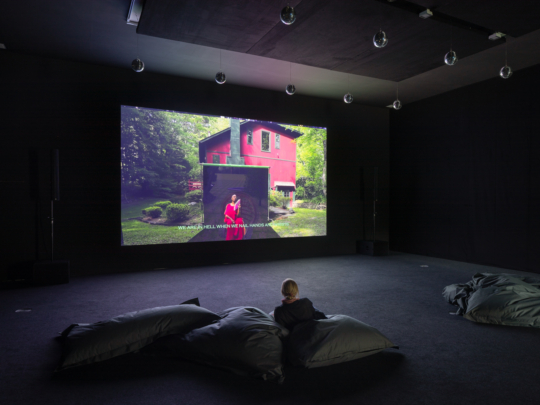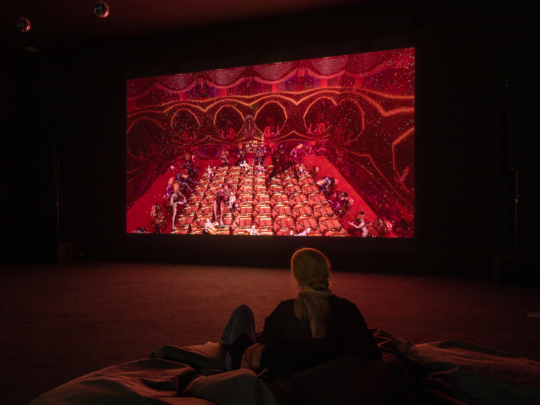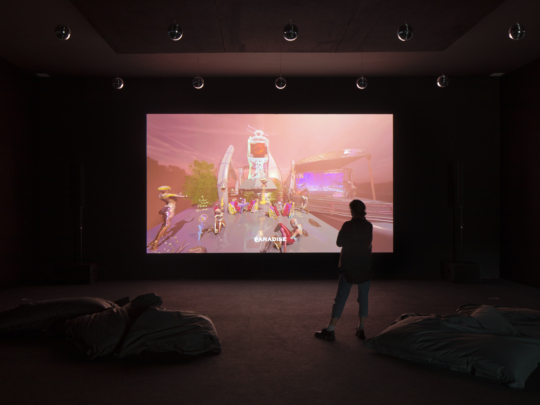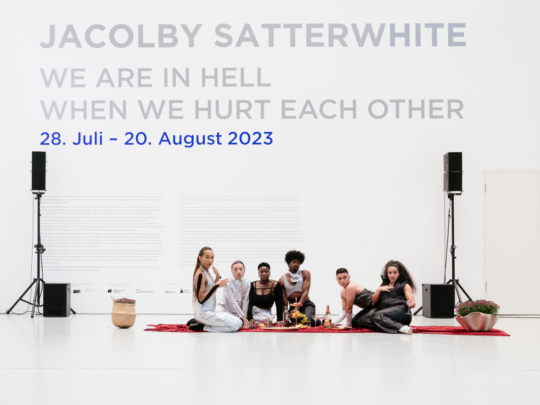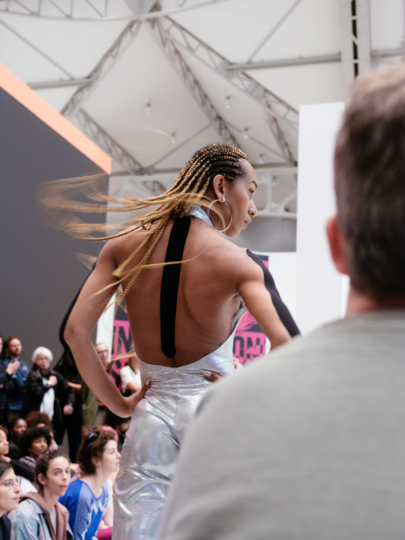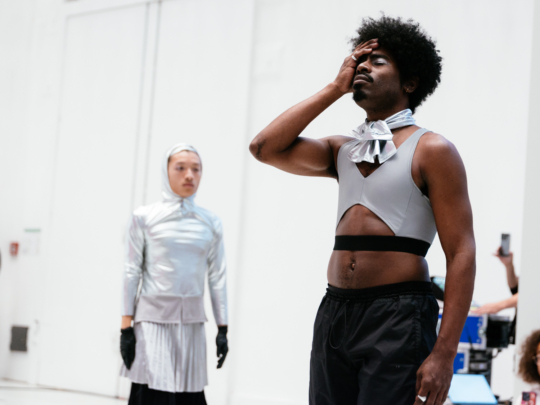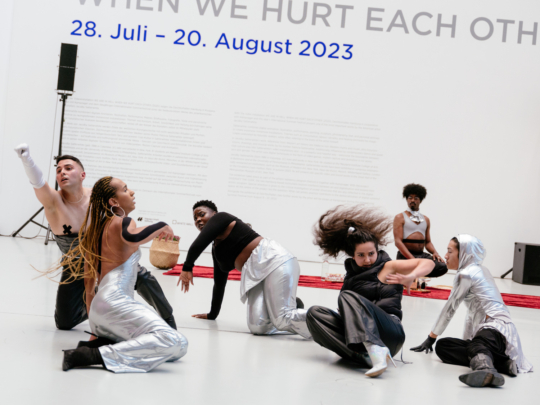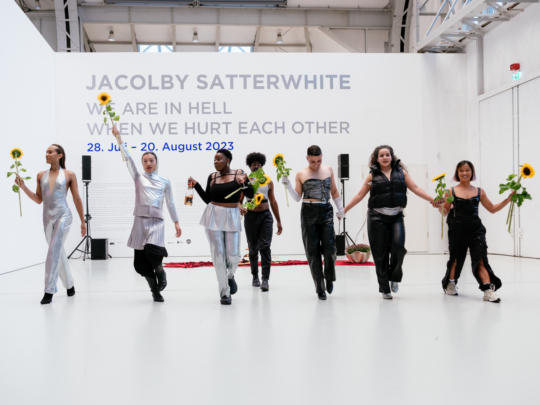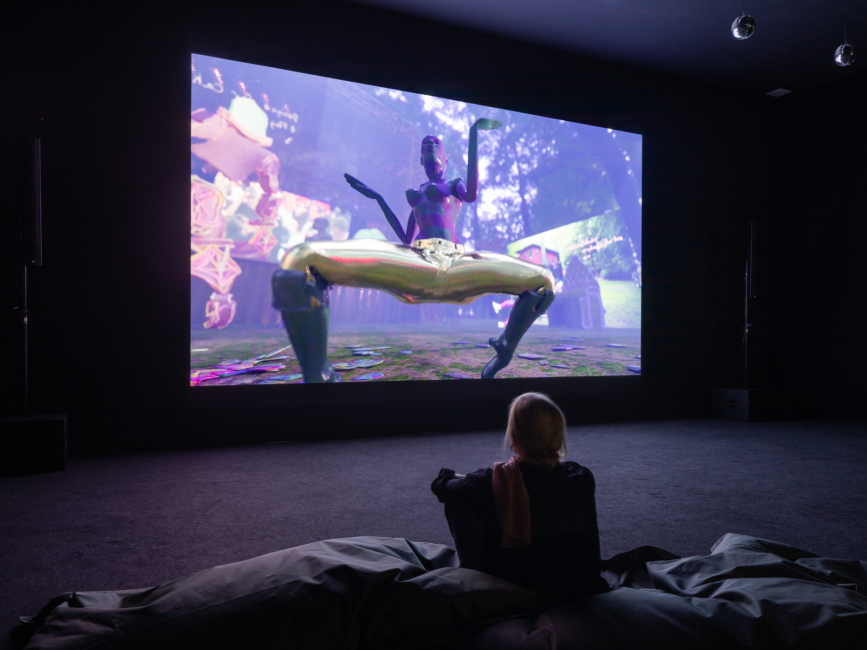
With compelling, surreal imagescapes, Jacolby Satterwhite has become one of the most distinguished digital artists of his generation. His art combines digital animation, illustration, performance, painting, sculpture, photography, writing and personal archives into immersive installations that centralize themes such as labour, consumption, the body, and healing. His fantastical worlds are informed by a Black queer perspective on modernity.
He interweaves art historical motifs with contemporary visual culture to create Afrofuturistic universes in which the boundaries around race and gender are dissolved. His digital avatars perform movements with a range of references from religious rituals to underground dance and club scenes to the choreographies of individuals like William Forsyth. In addition to collaborations with Solange, Perfume Genius, and The 1975 he has exhibited at New York's Museum of Modern Art and Munich's Haus der Kunst, among others and was commissioned to fill the renowned Great Hall of the Metropolitan Museum of Art in New York this autumn.
As part of "Diversify the Code," a collaboration between Deichtorhallen and Kampnagel, Satterwhite will show three works at the International Summer Festival. These will be shown at Deichtorhallen Hamburg and Kampnagel and will be accompanied by a supporting program of healing and motion capture workshops.
In the video We Are In Hell When We Hurt Each Other, the current events of our present reality permeate Satterwhite’s quasi-utopic universe. This virtual world is rooted in the expression of Satterwhite’s body movements, which are modeled and transcribed through digital bodysuits into animated fembot form. Current events permeate his virtual space that posits a post-pandemic, post-revolution world in which Black CGI female figures rooted in the artist’s body movements use ritual and movement as tools of resistance.


